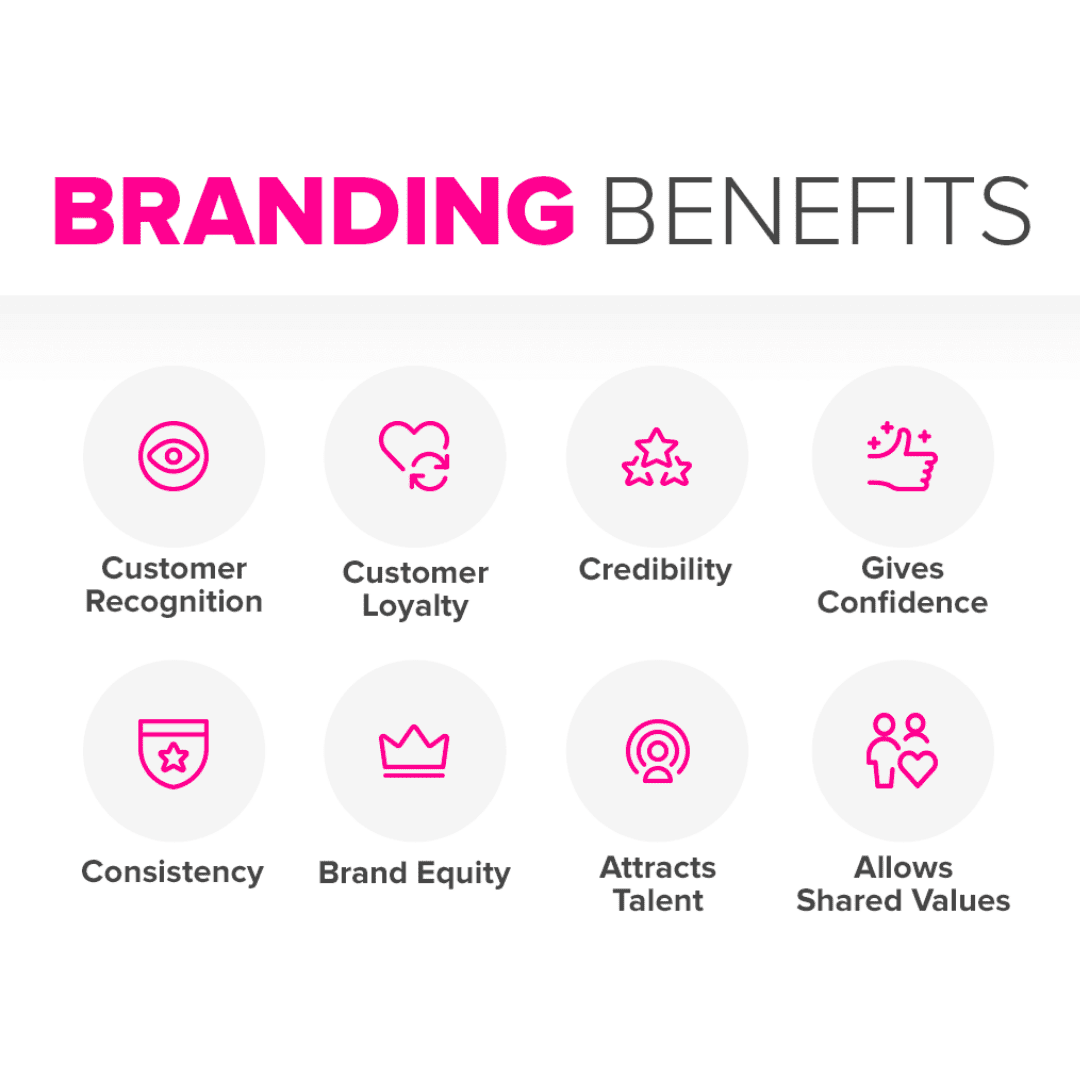Brand Equity
The Importance of Brand Equity for a Growing Business
Would you go for a random skin cream or pick a branded one instead? What motivated your decision here?
As consumers, our purchasing decisions are often influenced by a brand's image or reviews in general. That's called brand equity in the marketing world.
A brand's equity drives us to conclude one product is better than the other. It’s the reason companies pour tons of money into PR and advertising to be their customers' first choice.
If you are trying to build a business or launch a new product, understanding brand equity is vital. Let's start with defining brand equity and understanding how it can help you grow your business.
What is brand equity?
Brand equity is the value of your brand. It's built on a general perception that customers tend to buy a product they recognize and trust.
You nurture your brand equity because you want to positively influence customers and drive sales at the end of the day. Do you know how CRM software allows you to see how successful you are in nurturing your relationship with your customers? Well, brand equity, in much the same way, allows you to see how successful you are in ensuring your brand’s reputation.

Any business with high brand equity will be more likely to get customers than one with low brand equity.
But how do you build brand equity?
There are three stages to building brand equity. Let’s explain each stage using the Apple example.
Introduction: The first impression always lasts. It doesn't matter how extensive your product line is. What matters is how you market it. When Apple introduced the iPod, the company received positive reviews. These reviews prompted customers to switch from portable MP3 players to Apple products.
Elaboration: Here’s the part where you follow a unified approach to market your brand. Apple made sure that the iPod had the same user interface, look and feel as its other products so that their customers would know that the iPod was from Apple. It also made sure its marketing campaign for the new product was reminiscent of its previous marketing campaigns for other products.
Reinforcement: You have more leeway to experiment with your brand or reinvent it all together in this phase. When Apple introduced large-sized mobile devices and discarded their famous “phone that fits your palm" concept, it was only possible because they had already built a reputation in the market over the years. They were innovative, and their mobile products had a reputation for being user-friendly.
However, you can’t build brand equity overnight. Outstanding brand equity is only possible with years of hard work and consistent quality.
Five benefits of brand equity for your business
If you’re still not convinced about why you should work towards building good brand equity, read on. In this section, we’ll break down the five benefits of brand equity for your business:
1. Offers the opportunity to make higher profits
Consumers don't hesitate to pay more for brands they love and have a good reputation. You can vouch for this as you wander through any retail outlet to see the price difference between branded and generic products.
For example, Tesco's own-label Italian tomatoes cost 35p for 400g, while Napolina's tomatoes are valued at 95p for 400g – that's a whopping 171% more even if they’re tomatoes, too! So, what just happened?
According to the Journal of the Operational Research Society, brand equity plays a crucial role in defining price structure. Companies can charge 'premium' prices for products based on their brand value and popularity. As a result, they enjoy higher profit margins.
Brand equity is also a good indicator of company performance. The top five most valuable brands (as of 2019) are Amazon, Apple, Google, Microsoft, and Visa, all with excellent brand equity.
2. Lets you gain a valuable intangible asset
Brand equity is not tangible, but it can give businesses great value.
Let’s look at this example.
The brand value of Apple is $612.5 billion. Almost 30% of the firm’s total value is derived from the brand assets, including their sub-brands, like iPhone, Mac, and iCloud. In other words, Apple would lose nearly 30% of its value overnight if some trademark dispute happens or they no longer sell under the name "Apple" using the logo.

The brand name is intangible, but the value to the company is real! Generally, brands' equity accounts for 20-30% of the companies' total value.
As an intangible asset, a brand generally grows in value over time as it gains more recognition. Brand equity comes with benefits like brand loyalty and positive brand associations that customers make with products they believe are the best in the market.
3. Gives your brand more influence
When a brand has great brand equity, it becomes much easier to influence and convert potential customers. Companies are more likely to partner with influential companies for potential expansion. Because when they do partner with these companies that have a say, they also gain more visibility in the market. As a result, both businesses enjoy enhanced brand equity.
According to studies, companies with great brand equity also find it easier to hire talented resources. After all, who doesn't want to work with Google or Apple? That's a dream job for many!
Brand equity attracts talent because candidates want to work in the companies that inspire them. They use a company’s reputation as a criterion for deciding where to apply. It’s not just because they think they’d have a great time working in those companies. It’s also because they think other people would love to work there, too (again, thanks to brand equity). So, if they end up working in Google, for instance, they’d have all the bragging rights in the world!
That influence companies with excellent brand equity can also rub off on people. For instance, someone who works in Google is likely to be taken more seriously than someone in a smaller tech company, regardless of both persons’ other credentials.
This reputation could be a double-edged sword because other companies will offer Google employees an arm and a leg to transfer to them. However, because Google has a reputation for innovation and work-life balance, Google employees tend to stay and grow with the company.
4. Makes it easier to enter new markets
Because of excellent brand equity, it's easier to launch new offerings even in a previously untapped market. You can easily add new products to your existing line and still expect great results. Customers will be more than willing to try your new product because, well, you’re just that great in their hearts and minds.
Just look at Apple. Every time the tech giant launches a new product, the product gets the same hype or even more.
When you have great brand equity, you no longer have to worry about building a perception around your products as you enter a new market. Your brand value will do the job for you!
That’s not to say you shouldn’t market your new products anymore. You should still do that, of course. When you launch your digital marketing campaigns, make sure you also still think about how your customers already perceive you and act based on those perceptions. Repetition is critical here (remember the elaboration stage in building brand equity?). If the formula you used to market your products has worked for the longest zime, why change it at all?
5. Gives you a larger market share
Brand equity doesn’t just allow companies to reap higher profits. It also allows them to get a more significant market share. As we said, consumers are more inclined to purchase products with a good reputation, even if it means paying more for those products.

By “consumers”, I don’t just mean the new ones who have never purchased the brand before. I also refer to the consumers who are already considered loyal to the brand. With excellent brand equity, a company can easily retain its customers.
These customers are so loyal they eagerly await the release of the company’s next product and are more than happy to share the good news with their family and friends. The result? Well, more customers for the brand again.
How can you measure brand equity?
Now that you’re convinced about the importance of brand equity, let’s talk about how you can measure it. You need to measure existing brand equity to determine what you should do to improve it in the first place. That’s where brand equity metrics come in.
In this section, let’s look at those metrics you need to look out for:
1. Look at the purchasing behavior
Your customers reveal all sorts of data. Their purchase behavior can tell you, in a way, what their perceptions of your brand are (more on this later). If they repeatedly make purchases, it means you have good brand equity. You can probably deduce they see you as a brand worth exploring. However, if your customers’ purchasing behavior is not consistent, it can mean your brand equity isn’t as strong. This is particularly important for small businesses that want to establish their brands.
You can look at how consumers interact with your brand on your website to generate the information you need. But it also helps to go to the customers directly. For instance, you can send them surveys and ask how frequently they purchase your products. That way, you’ll hear the information straight from the horse’s mouth.
2. Look at your brand awareness
Brand awareness refers to how well consumers know your brand. Brand awareness is crucial because it allows you to stay top-of-mind with consumers. If they don’t know who you are and what you sell, how will they attach a positive value to your brand?
You can determine brand awareness by checking how well your customer is acquainted with your current offerings.
Check out your customer feedback. Look at social media reviews or Google recommendations and mentions. Search volumes on your brand can also help you determine brand awareness. These insights help you manage your brand online.
3. Study your brand’s public perception
For brand equity to be measured effectively, you need to consider both operational and experience data. Operational data refers to anything numerical--purchases, subscriptions, for example. Experience data, on the other hand, refers to customer emotions and perceptions.
We talked about how purchasing behavior can help you deduce how your customers perceive your brand. But looking at purchasing behavior won’t tell you those same perceptions. Did they purchase your product because they see you as an authority in the industry? Or is it because they just wanted to see for yourself what you’re about?
That’s why it’s still important for you to measure your customers’ perceptions.
You can send out perception surveys via email or conduct those in-store so customers can directly share their thoughts. Use social listening tools, too, to see the tone of the messages made by consumers about your brand on different social media platforms.
In closing
Brand equity is more important than ever. People don’t buy products on a whim. They buy products based on the hard data they find about you and their perception of your brand.
In other words, your reputation is key.
Brand equity is an intangible asset that can give your company a lot of value. It can allow you to increase profits, give your brand more influence, and help your brand enter new markets. It can also give you a larger market share.
Taking progressive steps to build your brand equity will increase your chances of staying ahead of your competitors. But to build your brand equity, you need to measure what you have in the first place. That’s where brand equity metrics come in. Just keep an eye out for brand awareness, public perception, and your customers’ purchasing behavior.
Craft that strategy to boost your brand equity and stick to it. With hard work and determination, you’ll see your brand reputation improving over time and, with it, your overall brand value.

Matt Diggity
Share this Post
